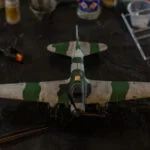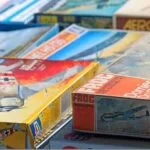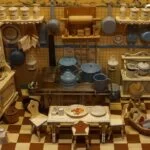10 Best Balsa Kits | For Beginners And Advanced Modelers
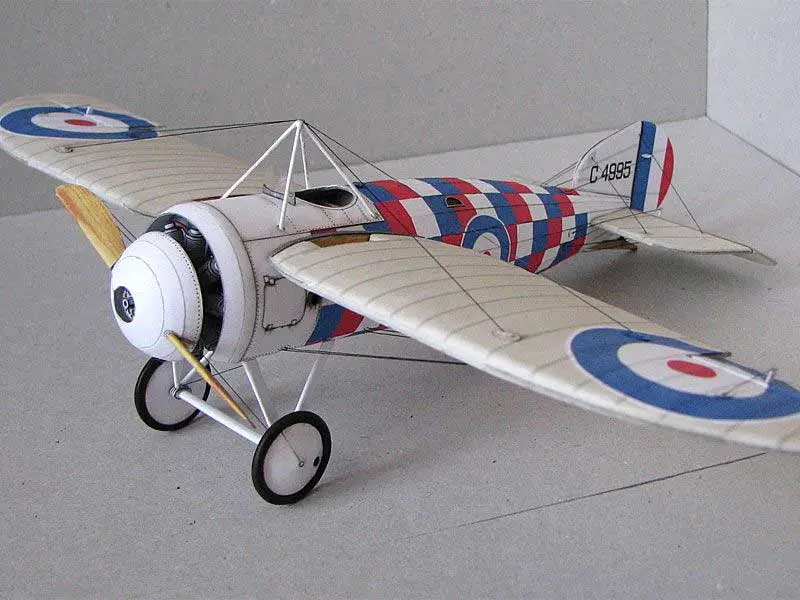
If you have been a fan of model airplanes from the ‘70s, you won’t trade anything for a good balsa kit.
Made from Balsa wood, balsa kits are known for their lightweight yet rigid form that promotes superior performance. But, it’s never easy to choose the best balsa kits, especially with how competitive the industry is today.
The good news is that we’ve got you covered. This article contains a list of our top 10 best balsa kits. We made sure to consider good scale appearance, laser cut models, and accurate design.
1. The Best Balsa Kit – Guillow’s P38 lightning
If you’re an airplane fan, this Guillow’s outstanding revolutionary aircraft Fighter used by the US Air Force during World War II in October 1941 is a must-have.
This iconic plane is a true beauty which balanced correctly, will be capable of close air support, but will also be extremely maneuverable.
At a price lesser than $180, Guillow’s P38 Lighting aircraft features laser-cut balsa parts, including a tricycle landing gear, waterslide decal sheet, and plastic spruce.
Pros
- Exceptional gun platform
- Solid Balsa wood quality
- Lots of detailed parts
Cons
- The plastic pieces may not fit properly
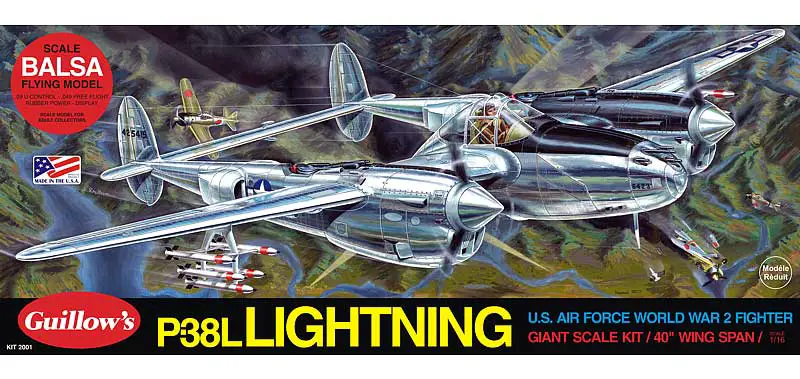

2. Guillow’s Mitsubishi zero
Another 1:16 scale balsa airplane from Guillow, the Mitsubishi Zero is modeled after the Japanese Zero-Sen Fighter of the Pacific Area launched in the early hours of Sunday, Dec. 7, 1941, on a surprise attack on Pearl Harbor, plunging the United States into World War II.
The fact that Guillow designed this Japanese top fighter aerospace propeller with laser-cut balsa parts makes this kit desirable. Plus, the kit contains a light tissue covering for top-notch realism.
Pros
- Laser-cut
- Good instructions
- No fitting required
Cons
- The balsa wood could be better
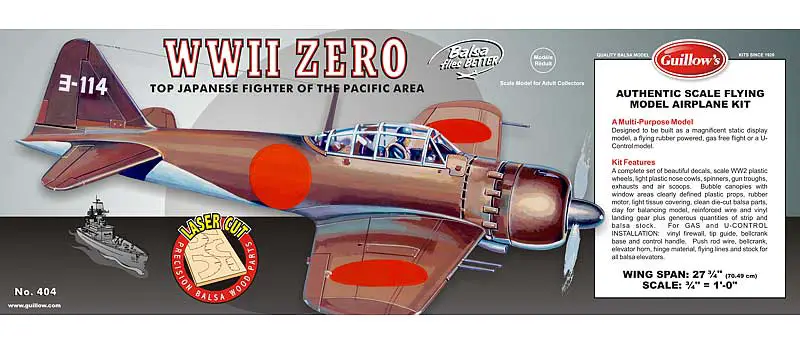

3. Guillow’s F-15 Eagle Model Kit
If you’ve being building basically 1/16 scale aircrafts, this Guillow’s F-15 Eagle could be one of the biggest balsa planes you’ve ever built. The best part, it is an impressive kit that will please both beginner and advanced modelers.
Guillow’s F-15 Eagle is an attempt to recreate the McDonnell-Douglas F-15 Eagle designed for the United States air force and first flown on July 27, 1972.
you’ll love this balsa kit because it offers exceptional scale realism, from the super detailed parts to the lightweight build.
Pros
- Plastic parts are easy to mount
- Great for beginners
- Contains enough parts to build a fighter hangar
- A fun build
Cons
- Instructions are a bit unclear
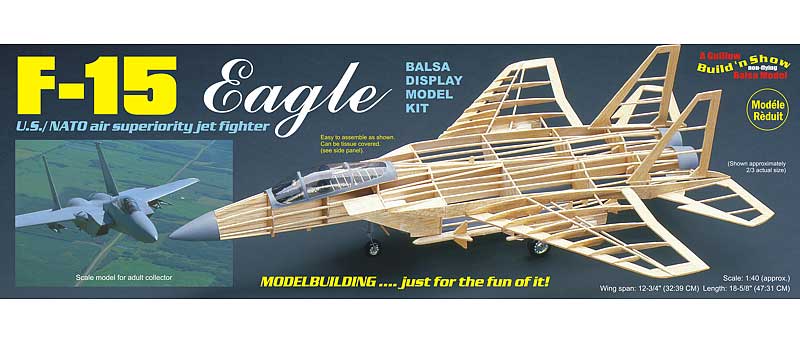

4. sig alien aircraft arrowmaster 55 kit
Do you love more of a sports biplane model? This Sig Alien Arrowmaster 55 designed by Tom Herr designed after the great Lou Andrews Aeromaster of 1966 is an inspiring kit.
Inside the box, you’ll find 267 laser-cut wooden parts.
But, the best feature of this balsa model is that part fit is amazing as far as alignment with the top and bottom wing, especially if you follow the instructions without much modification. This kit flies like a dream, and landings are a piece of cake.
Pros
- Part fit is amazing
- Easy to follow instructions
- spot on alignment with top and bottom wing
- Aesthetically pleasing on land and air
Cons
- Requires you add guide wires to the stabs If you intend to rough it up
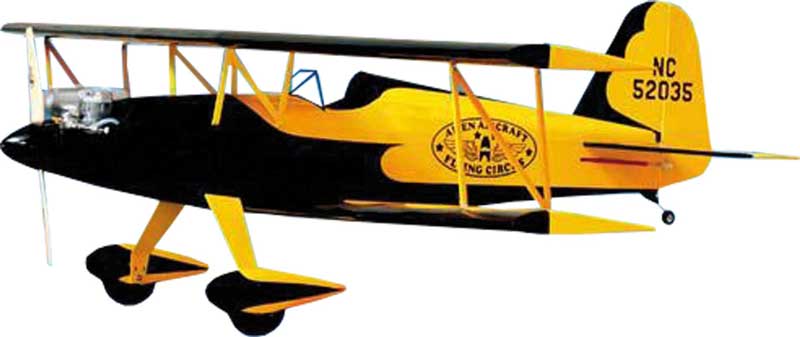

Love Scale Models?
Read More:Best WW2 Model Kits (Plane\Ship\Armor)
LeisureGuided.com
How long it takes to build a model
Scale model airbrush techniques
5. SIG Four Stars
The Alien Arrowmaster 55 basal kit isn’t the only superior airplane model from Sig.
You’ll also love Sig’s popular laser-cut sport plane Four Stars line of kits, including the Four Star 120, Four Star 60, Four Star 20, and even the Four Star 40.
Sig’s Four Stars line of kits, especially the four Star 40, has high-quality laser-cut parts with exceptional part fit.
The fine workmanship and laser cutting allow the time-tested Four-Star sport model heritage to shine through in this ultra-quick build.
Inside the Four Start 40’s box, you’ll find essential components such as laser cut parts, full-sized plans, lite plywood fuselage, molded clear plastic canopy, fast building wing with spruce spars, pushrods, hinges, aluminum main landing gear, large decal sheet, assembly manual and pre-cut sheet balsa tail surfaces.
Pros
- Parts fit is excellent and accurate
- A perfect first build for beginners
- Bulbous canopy fit well on it
- Classic detail
Cons
- Wing tips and tail are really sharp. So, be careful during assembly.
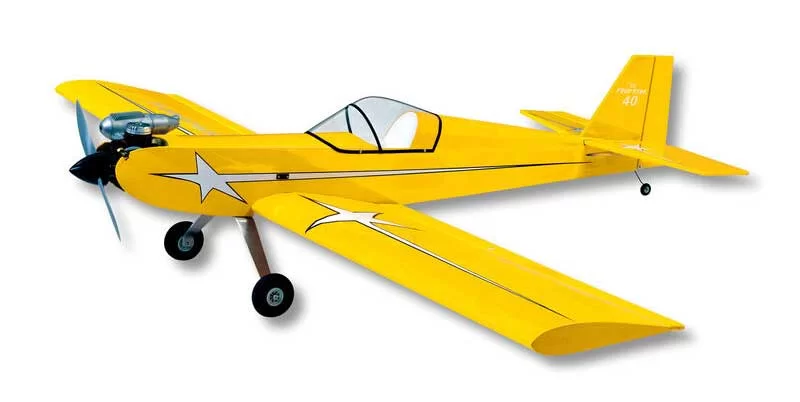

6. Balsa USA Bristol M-1
Love the history behind the first World War? Then, Bristol’s USA M-1 WW I airplane developed by the Bristol Aircraft Company is a good balsa kit choice.
For beginners, this could be a first or second-kit biplane model to try your hands on.
Why? The design is simple and the assembly is straightforward.
Overall, you’ll get lots of fun building this balsa kit.
Pros
- Looks great on a latex paint
- Allows electric power switch up
- A Straightforward build
Cons
- Building the taube might appear confusing at first for beginner modelers


7. H-King Raven (PNP) 990 Mini DLG Balsa/ Composite Glider 990mm
If you’re an entry-level model builder, you will love this HobbyKing’s mini Discus Launched Gliders Raven 990mm balsa airplane kit.
This kit follows the latest DLG design with no rudder, super-lightweight pull-operated elevator, full span ailerons, optional flaperons, and a throwing peg. The best part is the components are ready for final assembly right out of the box.
Pros
- Detachable wings make this kit easy to transport
- Excellent build quality
- Lightweight plastic fuselage pod
- Easy assembly
Cons
- The tail boom breaks easily
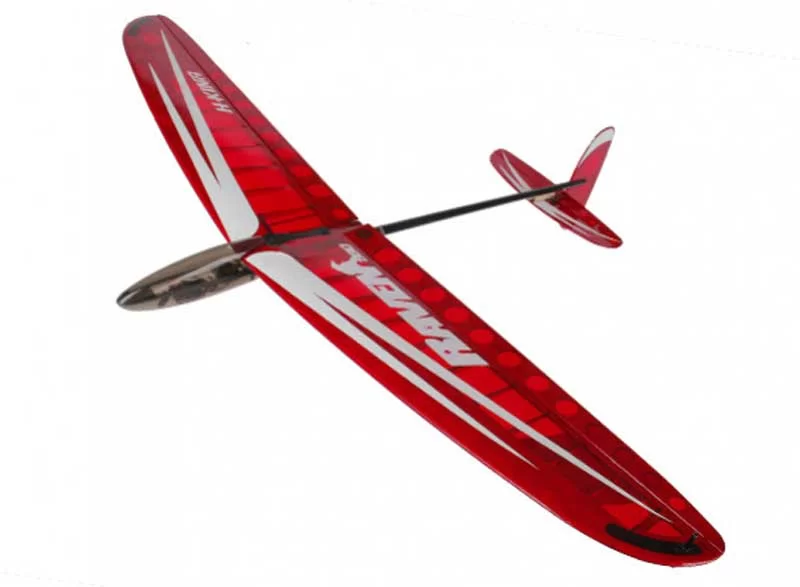

8. USMC PBJ1J (B25J) Rubber-Powered Aircraft (30″ Wingspan) Dumas
Ranking eight on our best balsa kit models is this 30” wingspan laser-cut rubber-powered aircraft from Dumas.
The kit features components such as hand-selected balsa, color peel, stick Decals, 9 plastic propellers, a full-size plan, F.A.I. Tan II rubber, vacuum molded parts, and a lightweight colored tissue.
Pros
- Allows wood reinforcement on the landing gear
- Decent fit
Cons
- Low-quality balsa parts
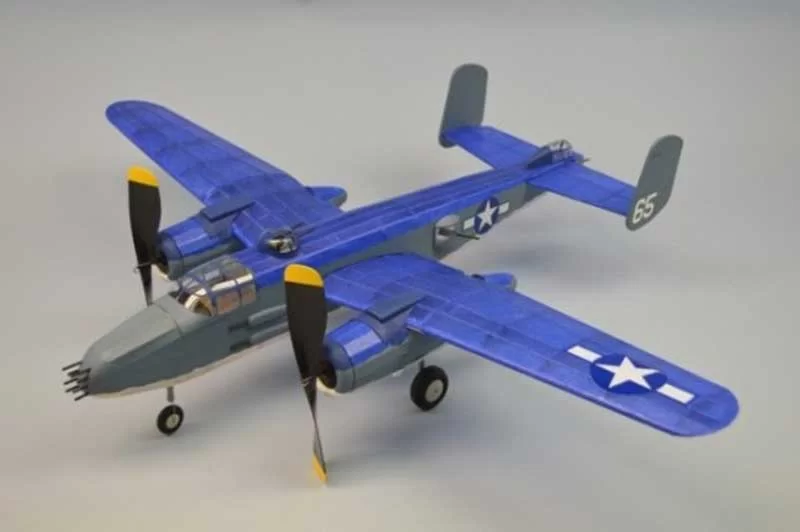

9. DH.53 Humming Bird
Another sport and training aircraft on our list is the DH. 53 Humming Bird balsa airplane model. This kit was built by de Havilland Aircraft Company in the 1920s and was first flown in October 1923 during the Air Ministry’s Light Aeroplane Trials held at Lympne Aerodrome.
This model features one pilot figure, wheels, flying struts, windscreen, 2-bladed fixed-pitch propeller, fuselage, and waterslide decals. The quick building interlocking laser cut construction offers better build accuracy and reduces time spent on the building board.
Pros
- Has lots of character
- impressive stack of parts
Cons
- Long tail and short nose
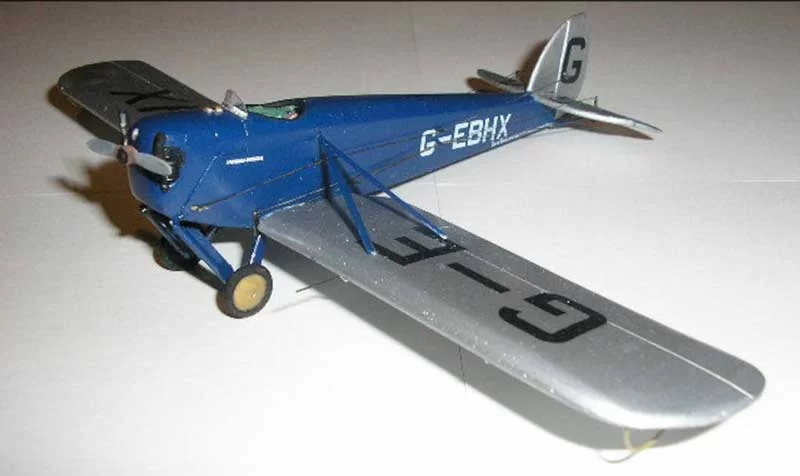

10. Squirt 400 Laser-cut Primary Trainer
Last on our list, today is this sporty 3-channel Squirt 400 Laser-cut Primary flight Trainer from Stevens AeroModel.
This balsa kit features a lightweight structural design with state-of-the-art CAD technology. In the box, you’ll find a fuselage, pre-bent landing gear, a removable horizontal stabilizer, precision interlocking laser-cut balsa and plywood parts, reinforced carbon fiber strips for the control surfaces, and full-sized plans.
Pros
- Innovative design
- All-inclusive laser-cut balsa parts
- Ease of assembly
- Comprehensive instructions
Cons
- Balsa wood quality could be better
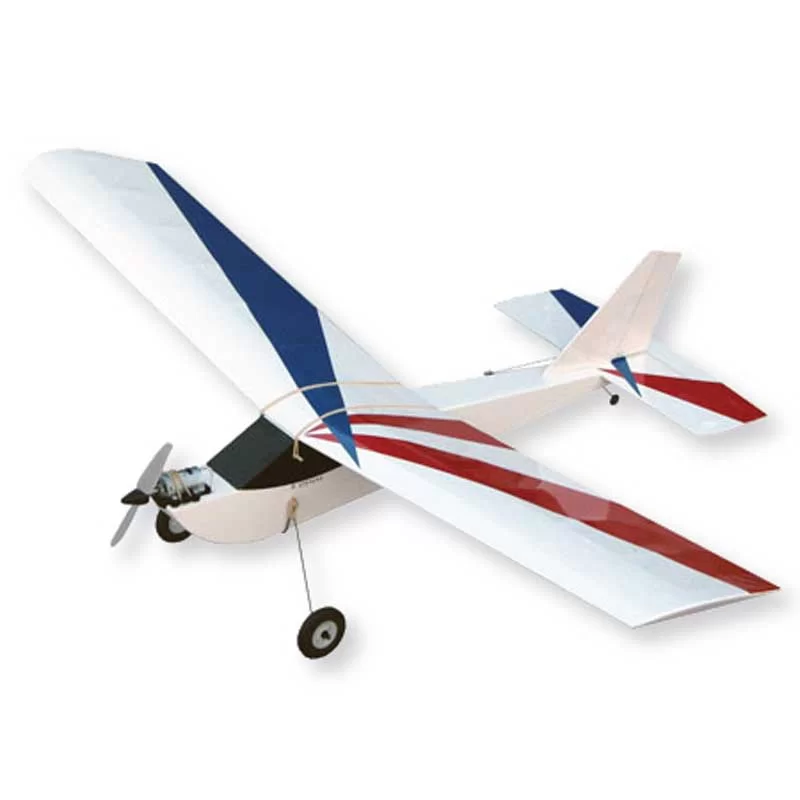

Differences between laser cut and die-cut
Whether or not you have been building balsa kits since the ‘70s, you’ll be glad about the switch from die-cut models to laser cut simply because laser-cut kits fit, making assembly so simple even a beginner can work on it.
On the other hand, the die-cut kits require a little more patience and skill to get show-quality results. However, it doesn’t mean that die-cut models are no good. Brands like Guillow’s and Comet made some nice die-cut kits in the ’70s and ’80s.
But with laser cut kits, everything goes together pretty well, other than having to cut your notches and some parts not matching up to the plans. If the wood is die-crushed, you end up having to cut out your parts. This can easily be done but does take time.
For example, the laser-cut 400 series Spitfire is designed with parts that meet gold-standard. The 1/16 square notches on it are precision cut so the stringers snap in place and you can identify parts. On the other hand, Guillow’s 400 series P-51 die cut, and even the 2000 series B17G die cut model kits features hard leading edges making interlocking parts difficult. Some other differences between laser-cut and die-cut kits you should know include:
| Laser Cut | Die Cut |
| They have much tighter tolerance | The soft wood smash easily before the die-cut |
| Much accuracy in construction | Considerable fit and less accuracy |
| More Expensive | Cheap |
Tips for building a balsa kit
- Before building your balsa kit, you’ll need to prepare for the build by spreading the plan for visual reference.
For this reason, you’ll need to get a large flat building board soft enough to stick pins into (for example, sheet plywood).
- Then, spread the plan. Be sure to use tape to keep the plans in position and place plastic or wax paper over them to prevent the wooden components with glue from sticking to the plans.
This also allows you to peel the assembled sections off the board with ease. - The first assembly should be from the body and never the base. Glue the body parts together and keep them in place using a pin.
- Avoid sticking pins directly into the wood so thin parts won’t split. Instead, thrust the pins on either side of each spar, beam, or former to keep pieces in place.
- Look for pins with a “T” shape. These are easier on the thumbs when pushing in.
- Only detach pieces of your kit from the building board when you need them to avoid mix-ups.
The user’s manual included in the model will show what parts to piece first. - Always sand your balsa kit frame so the raised panels and other covering frames will have an even, smooth finish.
- Avoid using excess glue. This way, your model remains superlight and runs better.
- Make sure you test fit pieces before committing to glue.
- Use white or Elmer’s glue. It is very forgiving, non-toxic, and bonds hard. Many builders prefer super glue because it bonds instantly.
However, super glue is not forgiving on your model, glues your finger, and has bad fumes. - Just because the parts fit almost perfectly does not mean it has perfect alignment. Measure and trim wooden components when necessary until every piece of the balsa kit is lined up perfectly, so your kit is firmly held in place the entire time.
- Always measure twice before cutting parts.
- If you have to build two identical parts, build the first part, then build the second upside down over the same drawing to avoid mix-ups.
- Stick with models under your skill level.
- Follow covering instructions on the instructions and take your time with the process to achieve fine results.
- Don’t forget to remove pins and any other item that shouldn’t be on the kit’s surface before enclosing them.
Conclusion
Investing in a high-quality balsa kit will make your building experience worthwhile But, choosing the best one can be challenging with the thousands of balsa kits on the market.
Hopefully, you’ll find one model you love in this guide. If you don’t, be sure you pick a laser-cut model with good scale realism when selecting one.
Die-cut balsas although cheap, can be a challenge to fix, especially for beginners.

